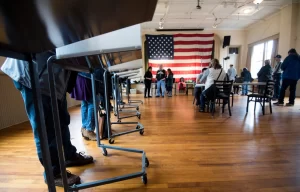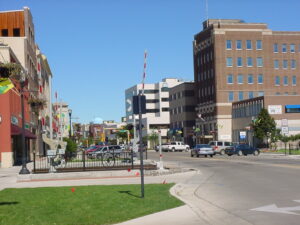Sometimes you can learn a lot by checking out what the neighbors are up to. They might have found a way to get a greener lawn. Or bigger tomatoes. Maybe they have a reliable handyman you can borrow. Or maybe they have even found a better way to run their elections.
This is the case for one of our neighbors to the north, Fargo, which has adopted a simple voting system that is superior to ours. It is less expensive and does a better job than ours of giving voters what they want. It is called approval voting.
The Sioux Falls Voting System is Expensive and Can Thwart Voters’ Intent
Sioux Falls holds city elections in the spring every two years. We elect some city council members each time. Every four years we also elect a mayor. And we use an old voting system to do it.
We use plurality voting which requires voters to pick just one candidate regardless of how many might be running for an office. If no one receives over 50% of the vote, voters must return to the polls three weeks later for a runoff. That’s a waste!

Citywide runoffs reportedly cost $80,000, less if the runoff is only for a district. The runoffs put an unnecessary financial burden on the city and on candidates. And they force voters to once again head to the polls.
Plurality voting is an old-fashioned system that can frustrate voter intent. It, “is the worst voting method there is” according to Aaron Hamlin, executive director of the Center for Election Science. Plurality voting “tends to split votes for moderates. It favors more polarized candidates.” We saw that happen in the 2010 Sioux Falls mayor’s race when three moderates split 50% of the vote and none advanced to the runoff. That’s why we should look north for a better option.
Fargo’s System Works Well
Sioux Falls and Fargo have much in common. They are about the same size, with a metro area population of over a quarter of a million people. Both are the largest city in one of the Dakotas. They are on the far eastern edge of their state, on Interstate 29. Each has a Scheel’s, a Costco and a large Sanford Health hospital. In other words, Fargo is the community in the Dakotas most like us. And they found a fix for their election frustrations.

Downtown Fargo
Disappointed with their plurality voting system, Fargo voters adopted a new approach called approval voting in 2018 and have used it since then. Their experience through two election cycles demonstrates that approval voting is easy to use and doesn’t require a change in voting systems or software.
Approval voting ballots look very similar to traditional plurality voting ballots, only you can vote for more than one candidate for an office. You can vote for all the candidates you approve of and withhold your vote from any you don’t approve of. You have the freedom to say “yes” or “no” to every candidate, not just one.
Approval voting is more expressive of voters’ intent. It ensures popular winners. With approval voting, each voter may choose (approve) any number of candidates, and the winner is the one approved by the largest number of voters. Ultimately, the winner is both popular and likely to beat all rivals head-to-head.
Candidates are rewarded for appealing to a wide swath of the electorate. They tend to attack less and collaborate more. More candidates seem to run. Candidates who alienate some segment of the population likely may struggle. And approval voting eliminates the spoiler effect that plagues plurality voting.
In the 2022 Fargo mayor’s election a consensus winner easily emerged from a field of seven. The incumbent was approved by 64.5% of voters. At the same time, two winners were selected to serve as city commissioners from a field of fifteen candidates. They were approved by 42% and 39% of voters.
The election produced popular winners while the city, the candidates and the voters were saved an expensive runoff.
Fargo Quickly Adapted to the New System
Voters in Fargo reportedly find this election system easy to understand. The city auditor was asked if he received many questions about approval voting. He responded, “We really haven’t. I think it is a fairly simple process.” The ballot is so familiar looking, that many hardly notice the change.
After a couple of election cycles, Fargo voters are reportedly used to the option of approving more than one candidate. Some voters choose to pick one, and some approve all that they like. Either way works.
On average in the 2022 election, voters approved 1.5 candidates per ballot in the mayor’s race and 3 candidates per ballot in the more crowded commission race. Voters appear to appreciate being able to pick more than one. But there’s more to the story.
While the new approach is seemingly working well, not everyone appreciates progress. Unfortunately, some wary state officials are rumored to be threatened by approval voting, fearing it could grow in popularity and spread. Change, even positive change, can pose a threat to those whose self-appointed duty is to preserve the status quo.
We Can Use Approval Voting in Sioux Falls
Home rule cities in our state could use approval voting. The South Dakota Attorney General recently confirmed that. A city’s governing board simply needs to adjust their ordinances to start using it. Sioux Falls is a home rule city, so if our city council agrees, we could use approval voting for the April 2024 election.
Our neighbors to the north are onto something. They figured out that approval voting is a simple improvement in traditional plurality voting. It eliminates the need for expensive, low turnout runoff elections. It also produces popular winners and better reflects the wishes of the voters.
South Dakota’s home rule cities should consider it, especially those that sometimes waste money on unnecessary runoff elections.